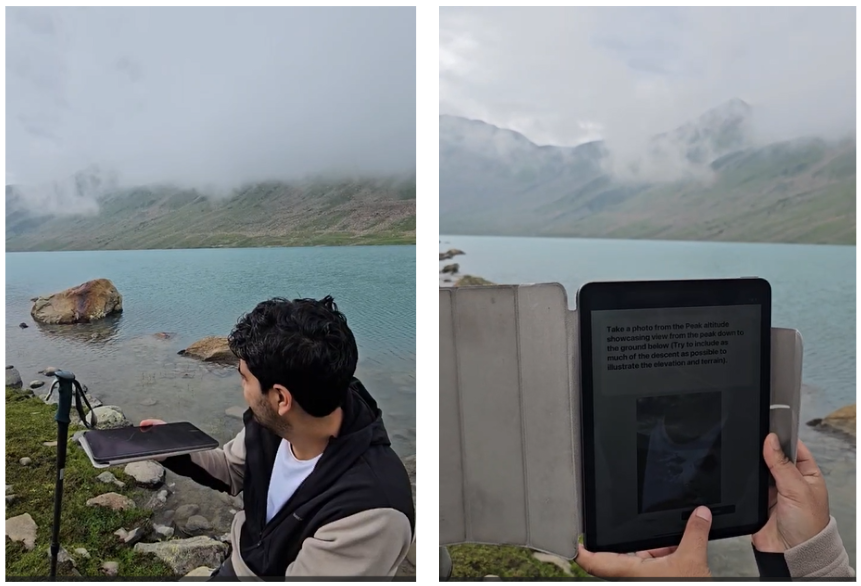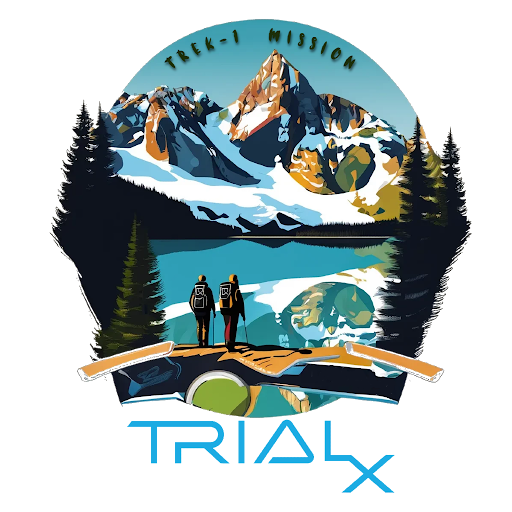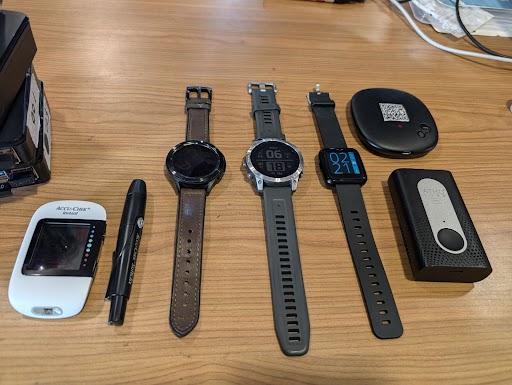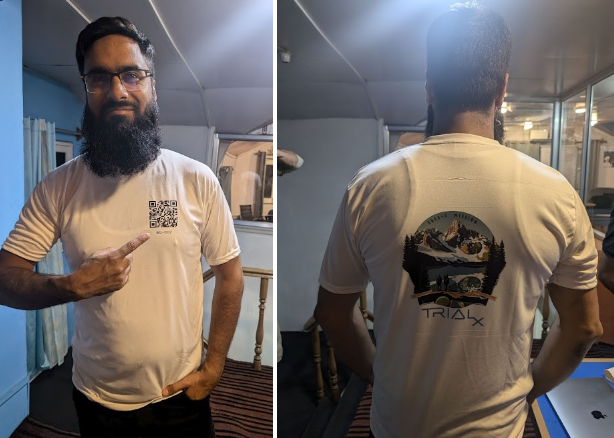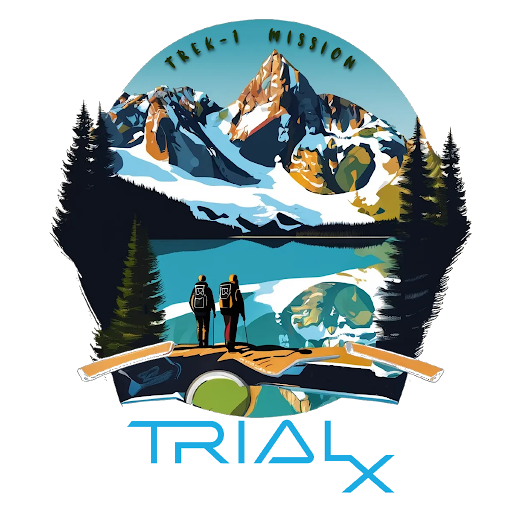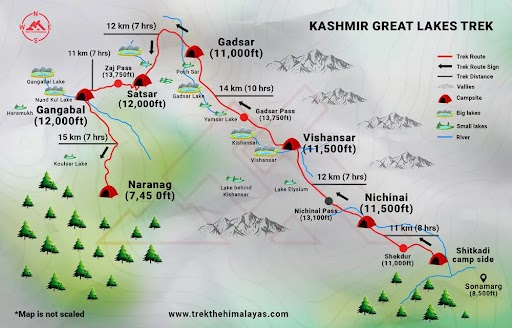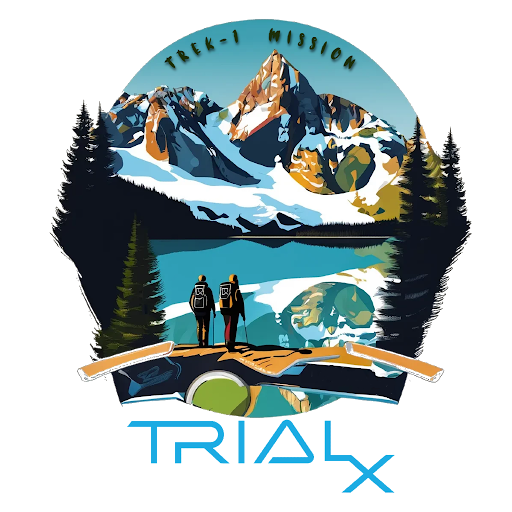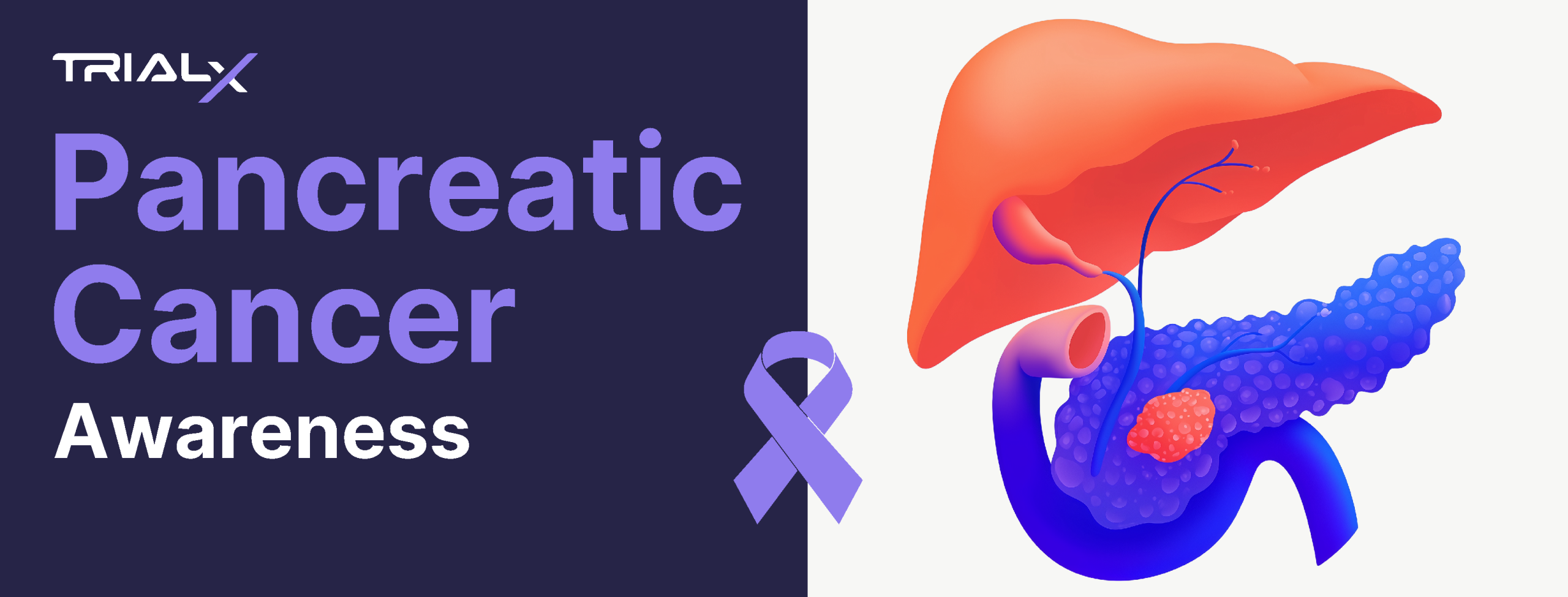TREK-I – A Space Analog Mission on Earth to Collect Remote Health Data: Understanding Human Adaptation At High Altitudes 🏔️
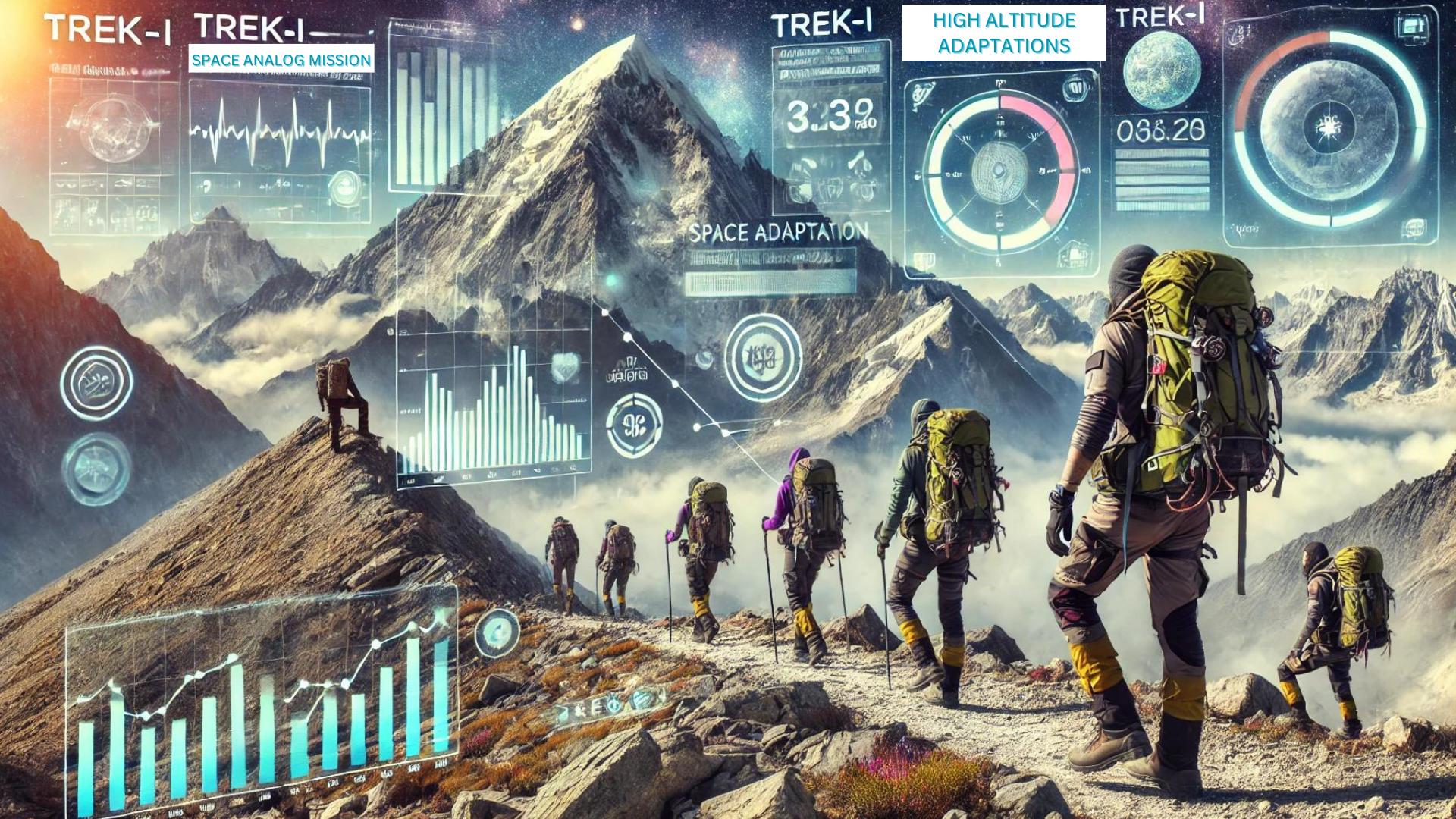
🏔️TREK-I Analog Mission Updates: A Successful Ascent, Acclimatization, Touchdown & Remote Health Data Collection⌚️
We’re excited to share that the team has safely returned to the valley after an exhilarating journey to the heights! The descent from Gangabal, standing at 11,729 feet was as thrilling and challenging as the ascent, but everyone is back, safe, and beyond excited about what we’ve accomplished from this analog mission.
Although offline for the past three days, the TREK-I team have been fully immersed in the challenges of high-altitude acclimatization, gathering crucial data that will advance our understanding of how the human body adapts to extreme environments. The team was fully equipped with state-of-the-art wearables and environmental sensors to collect vital physiological data throughout the journey using our extreme environment remote data collection platform. Each participant carried a personalized data hub (The Box) that stored all the collected data during the trek. These hubs are designed to function in remote, offline environments, ensuring that no data is lost even in the most challenging conditions. Now, the data from these hubs will be synced to a cloud database for in-depth analysis.
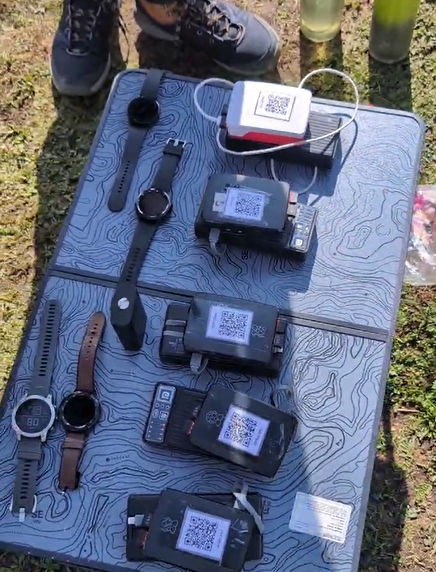
After an exhilarating ascent and a crucial acclimatization period, our participants have returned with valuable data, stunning visuals that capture the spirit of this incredible journey.
The TREK-I Mission has provided us with invaluable data on how the human body adapts to extreme environments. Our team demonstrated incredible resilience and determination, and we couldn’t be prouder of the insights we’ve gained from this journey. The knowledge gained from the TREK-I Mission will contribute to a deeper understanding of high-altitude physiology and provide valuable insights into the functionalities of our cutting-edge extreme environment remote data collection platform.
As we begin the process of analyzing the data, we’re already looking ahead to the next steps in our research. Stay tuned for more updates…and in the meantime, enjoy the extraordinary visuals from our mission— capturing not just the challenges and triumphs of the trek, but the beauty and wonder of the natural world.
Day 1 Updates: The Ascent Begins – TREK-I Mission in Full Swing 🌄
Today marks the first day of the TREK-I Mission’s high-altitude adventure, as our participants have officially begun their ascent to Gangabal, an Alpine lake standing at 3575 meters above sea level. It’s a 7-hour journey to the summit. Although they’ll be offline for the next three days, the team is fully equipped with state-of-the-art wearables and environmental sensors to collect vital physiological data throughout the journey using our extreme environment remote data collection platform.
The Science Behind High-Altitude Adaptation
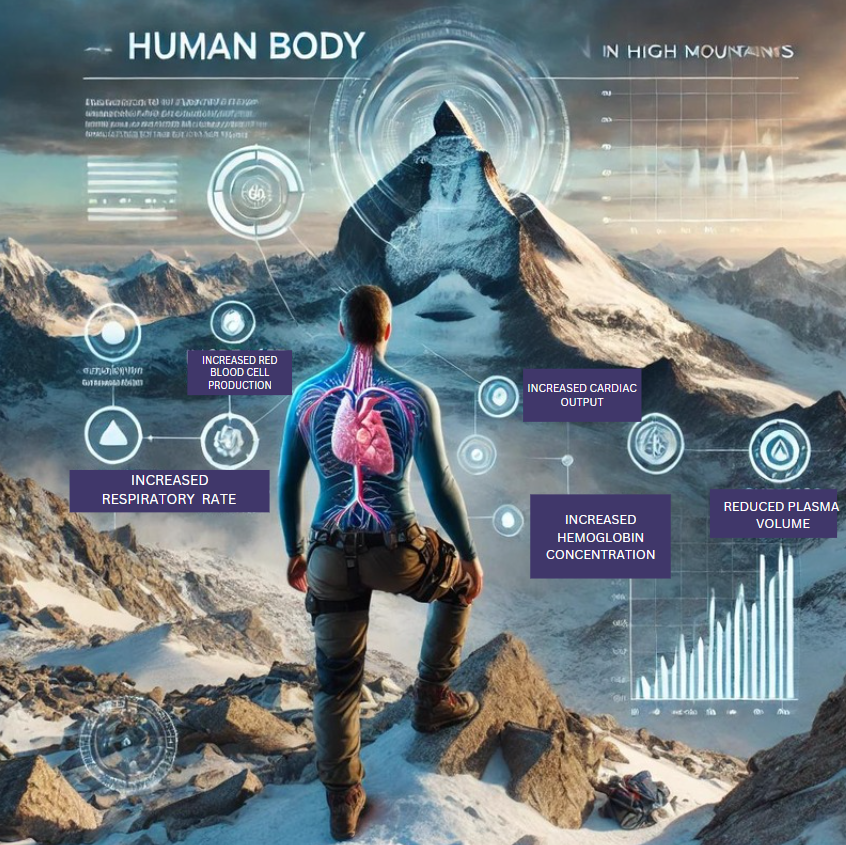
At sea level, the air we breathe contains about 21% oxygen, which is just right for our bodies to function optimally. However, as we climb higher, the air becomes less dense, and oxygen levels drop. This decrease in oxygen availability poses a significant challenge to our bodies, particularly for those who are not accustomed to such environments. As the air becomes thinner and oxygen levels decrease, the body must work harder to maintain essential functions. This triggers a series of physiological adaptations, such as increased breathing rate and heart rate, as the body strives to deliver enough oxygen to vital organs and tissues. Understanding these adaptations is crucial to gain insights into how humans can safely and effectively perform in extreme environments.
Comprehensive Data Collection During the Trek
As the trekkers make their way up the mountain, they are meticulously recording a wide array of physiological and environmental data that will provide invaluable insights into how their bodies are adapting to the increasing altitude. Critical data is being gathered during the ascent and upon arrival at Gangbal, a key milestone in the trek. Key measurements during the Trek include:
- Continuous Monitoring: We’re tracking step count, oxygen saturation levels (SpO2), heart rate, and respiratory rate to understand how the body responds to the rigors of high-altitude trekking.
- Environmental Data Collection: Environmental factors such as temperature, humidity, and altitude are being recorded to contextualize the physiological data and assess how these variables influence human adaptation.
- Daily Surveys: Participants are completing daily surveys to report on perceived exertion, sleep quality, nutritional intake, and hydration status. These subjective measures will complement the objective data, providing a holistic view of how high altitude affects overall well-being.
While we may not have real-time updates or images from the field during this phase, rest assured that the data being gathered is critical. Once the participants return, all collected data will be synced to a cloud database for comprehensive analysis. This will allow us to generate a detailed report that delves into the physiological and biochemical changes our participants experience due to high-altitude exposure.
As the team continues their ascent and acclimatization over the next few days, we’ll be eagerly awaiting their return to dive into the data and share our findings. Stay tuned for more updates as the TREK-I Mission unfolds!
#TREKI #Day1 #HighAltitude #ExtremeEnvironment #Remotedatacollection #Spacehealth #Innovation #Adventure #HumanAdaptation #WearableTech #MountainTrek
Gearing Up for Adventure: Day 0 of the TREK-I Mission – The Journey Begins!
Welcome to Day 0 of the TREK-I Mission! The air was buzzing with excitement as the sun rose today. Today is the day when months of planning and preparation finally comes together, setting the stage for our groundbreaking adventure. Today marks the beginning of our exciting journey to explore the impacts of high altitude on human physiology and cognitive function. As we prepare to embark on this challenging trek to Gangabal, an Alpine lake standing at 3575 meters above sea level, our team is busy ensuring that everything is in place for a successful mission. Here’s a recap of our pre-trek activities.
Setting the Stage for TREK-I Mission
The day began with an introduction to the TREK-I Mission, where we gathered all participants to discuss the objectives of this groundbreaking study. The excitement was palpable as the research team outlined how we’ll be using our extreme environment remote data collection platform to monitor and analyze the physiological and cognitive responses of our volunteers as they trek to high altitudes.
Each volunteer received their kit containing all the necessary information about the trek, along with their assigned gadgets, wearable devices and environmental sensors.
We conducted a detailed overview of the trek route and schedule, ensuring that everyone is familiar with the journey ahead.
Baseline Assessments and Setup
The TREK-I mission aims to systematically investigate and document the adaptations and responses of humans to high altitude conditions, providing valuable insights into the physiological processes involved. So, as a crucial step in our mission, the afternoon was dedicated to establishing baseline measurements for each participant.
These baseline measurements will serve as a reference point to compare pre-trek and post-trek data to better understand the physiological changes that occur at high altitudes. In addition to vitals such as body weight, body temperature and blood pressure, the baseline physiological assessments included:
- Oxygen Saturation Levels (SpO2)
- Heart Rate
- Respiratory Rate
- Cognitive Function Tests
- Acute Mountain Sickness (AMS) Symptoms Survey
- Daily Hydration Status Survey
- Perceived Exertion Scale
We also conducted cognitive function tests using survey tools such as Cognitive Function Tests Survey. These tests are designed to evaluate participants’ mental acuity, memory, and reaction times.
After the assessments, we distributed and set up the wearables and environmental sensors. These devices will continuously collect data on various health metrics and environmental conditions as our participants make their way up the mountain. The setup process was thorough, ensuring that each device is calibrated and functioning correctly.
Final Preparations and Briefing
As the sun began to set, we gathered all participants for a pre-trek briefing session. This was an opportunity for everyone to ask questions, share their thoughts, and prepare mentally for the journey ahead. The briefing covered safety protocols, what to expect during the trek, and how to use the wearable devices effectively.
During this session, participants shared their expectations for the trek. It was inspiring to hear the diverse motivations and backgrounds of our volunteers, all united by a common goal: to contribute to scientific research and push the boundaries of human endurance. Finally, the evening concluded with participants making their final preparations and…
With gear checked, bags packed, and excitement running high, we’re all set to begin the ascent tomorrow.
Stay Tuned for Day 1: The Ascent Begins
Stay tuned, because Day 1 promises to be an unforgettable start to this incredible journey! 🌄✨ as we begin our trek to the summit of Gangabal, towering 3575 meters above sea level. We’ll be sharing updates and insights as our participants begin the ascent to adapt to the challenging high-altitude environment in an entirely offline setting. Stay tuned for more!
#TREKI #Day0 #PreTrek #HighAltitude #Analogmission #ExtremeEnvironment #Remotedatacollection #Spacehealth #Innovation #Adventure #HumanAdaptation #WearableTech #MountainTrek
Introducing TREK-I Mission – August 7, 2024
Get ready for an adventure like no other! We are thrilled to announce the launch of our latest and most exciting initiative — the TREK-I Mission (Tracking Respiratory, Exertion, and Kinetics in High Altitude Adaptation at an Alpine Lake). This extraordinary analog study is set to explore the physiological and cognitive impacts of high altitude on human participants, using our cutting-edge extreme environment remote data collection platform.
Why TREK-I Mission?
NASA defines analog missions as field tests in locations that have physical similarities to the extreme space environments to mimic the conditions and challenges astronauts face in space. These missions help researchers and engineers test new technologies, train astronauts, and study the effects of long-duration space travel on human physiology and psychology. A few examples of analog missions include NASA’s NEEMO (NASA Extreme Environment Mission Operations) where astronauts live and work underwater, the Mars Desert Research Station in Utah simulating Mars conditions, and the European Space Agency’s CAVES program, which involves cave exploration to replicate space environments.
TrialX’s TREK-I Mission aims to delve deep into how the human body and mind adapt to the challenges of high-altitude environments in an entirely offline setting. By collecting and analyzing various physiological parameters before, during, and after a high-altitude trek, we’re on a quest to uncover valuable insights into how extreme conditions affect our health and performance.
The Adventure Awaits!
Picture this: a group of intrepid study volunteers embarking on a thrilling trek to Gangbal, an Alpine lake, towering at an impressive 3575 meters above sea level. It’s a 7-hour journey to the summit, and we’ll be documenting every step of the way. Here’s how our TREK-I mission adventure will unfold:
- Pre-Trek Preparation
- Our brave mission commanders and specialists will undergo baseline physiological assessments like heart rate, blood pressure, and oxygen saturation.
- We’ll dive into their cognitive functions with fun and challenging tests.
- All historical health data will be synced into a central hub.
- We’ll gear them up with wearables and environmental sensors.
- Acclimatization Period
- Over three days, our adventurers will acclimate to the high-altitude environment while their health metrics are monitored offline by our TREK-I Commander-in-Chief.
- We’ll collect data from wearables, environmental sensors, and surveys to track every twist and turn of their physiological and cognitive changes.
- Trek to the Summit
- The ascent begins! Over four thrilling days, we’ll continue data collection as our mission specialists conquer the climb.
- We’ll document their real-time physiological and cognitive adaptations as they face the challenges of high altitude.
- Descent and Post-Trek Analysis
- After reaching the summit, the descent will be meticulously monitored with further data collection.
- Post-trek assessments will evaluate the lasting impacts of the trek on our participants’ health and cognitive functions.
- All the data will be analyzed and synced, leading to a detailed and insightful report.
Gadgets, Wearables & Devices
Throughout the TREK-I mission, our commanders and specialists will use a variety of devices and gadgets, including iPads, iPhones, glucose monitors, Pixel Watches, and BP monitors. They will also utilize wearables such as Garmin watches, Samsung watches, Atmotube sensors, PineTime Watches, and Android Watches. Using these gadgets and wearables, the mission specialists will measure basic vitals, including changes in oxygen saturation levels (SpO2), respiratory rate and heart rate, as well as cumulative step count throughout the journey.
Our Secret Armor/Weapon: The Extreme Environment Remote Data Collection Platform
The TREK-I mission leverages the power of our extreme environment remote data collection platform to capture comprehensive health data in real-world settings. By integrating wearable technology, environmental sensors, and advanced data analytics, we’re providing a holistic view of how the human body and mind respond to high-altitude challenges.
Meet the Team! Join the Adventure!
We’re excited to bring together a diverse group of healthy volunteers who love trekking and adventure. Their experiences and insights will be invaluable in helping us understand human adaptations to extreme environments. Not only will they contribute to research, but they’ll also embark on an unforgettable journey to new heights. Meet the TREK-I Mission commanders and specialists below…
The Journey Begins! Follow it with Live Updates
The TREK-I Mission will be significant in understanding high-altitude physiology and cognitive function and at the same time test our remote data collection platform in extreme environments. We can’t wait to share our journey and discoveries with you as we push the boundaries of human potential and innovation. Join us as we share the latest developments, participant stories, and thrilling discoveries. Stay tuned as we provide regular updates on this TREK-I Live Blog here.
Stay connected, follow along, and let’s embark on this exciting adventure together!
#TREKI #HighAltitude #ExtremeEnvironment #Remotedatacollection #Analogmission #Spacehealth #Innovation #Adventure #HumanAdaptation #WearableTech #MountainTrek
